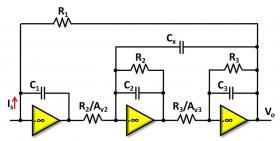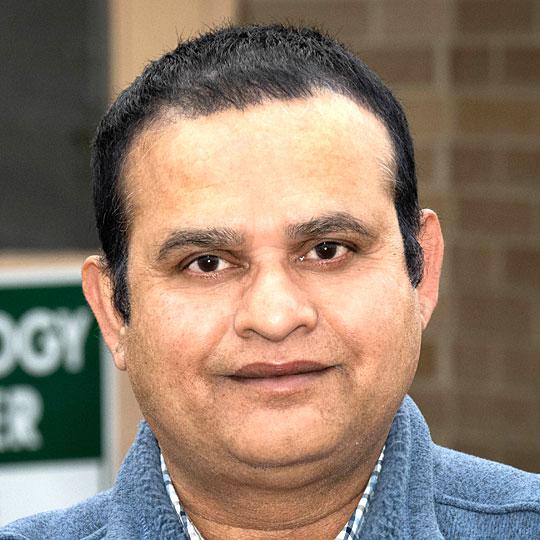Technologies Available for License
Category: electronics & instrumentation
2011-013: High Dynamic Range Measurements with Delayed Dissipative Feedback
Invention: 2011-013
Patent Status: U.S. Patent Number 9,071,219 was issued on June 30, 2015
For technical and licensing related questions, email tcp@bnl.gov.
Summary

Delayed Dissipative Feedback (DDF) applied to a third order shaper.
This application-specific integrated circuit (ASIC) implements semi-Gaussian filters (pulse shapers) to detect signals with low noise and high resolution. Compared to other devices, this ASIC for Delayed Dissipative Feedback achieves higher dynamic range at comparable area and equal capacitance, improving the signal to noise ratio. Conventional designs based on voltage amplifiers with local feedbacks introduce noise that limits the dynamic range, but this novel design overcomes that obstacle.
Description
This ASIC for Delayed Dissipative Feedback delays wherever possible the feedback of the resistive (dissipative) components: the negative dissipative feedback through at least one resistor to an input of an amplifier of the shaper is provided from a voltage output by a subsequent circuit stage, and is delayed by one or more time constants. The design of low-noise linear shapers suggests that once the equivalent noise charge (ENC) from the charge amplifier is defined, then the dynamic range of the system is set by the voltage swing and the value of the capacitance to achieve the poles of the shaper. The configuration used to generate the pole(s) also has relevant impact. Configurations based on passive components in feedback offer a better dynamic range than those using both active and passive components, such as scaling mirrors.
Benefits
Delayed Dissipative Feedback can help overcome some of the limitations of the more classical ASIC configurations. For example, in a third order shaper dynamic range may be increased by a factor of two, diminishing noise and increasing signal clarity.
Applications and Industries
The new circuit design will advance technology used in industrial automation, medical signal processing, and radiation detection for medical and security applications.
Journal Publication & Intellectual Property
- Shaper Design in CMOS for High Dynamic Range (.pdf)
- US 9,071,219 B2 (.pdf)
Contacts
-

Poornima Upadhya
Manager Technology Transfer & Commercialization
Technology Commercialization
(631) 344-4711, pupadhya@bnl.gov
-

Avijit Sen
IP Licensing & Commercialization
Technology Commercialization
(631) 344-3752, asen@bnl.gov




